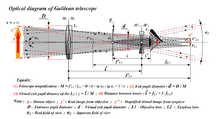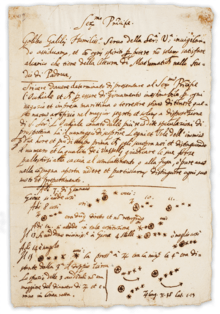Duhem–Quine thesis
.jpg)



The Duhem–Quine thesis, also called the Duhem–Quine problem, after Pierre Duhem and Willard Van Orman Quine, is that it is impossible to test a scientific hypothesis in isolation, because an empirical test of the hypothesis requires one or more background assumptions (also called auxiliary assumptions or auxiliary hypotheses). In recent decades the set of associated assumptions supporting a thesis sometimes is called a bundle of hypotheses.
The substance of the thesis
The Duhem–Quine thesis argues that no scientific hypothesis is by itself capable of making predictions.[1] Instead, deriving predictions from the hypothesis typically requires background assumptions that several other hypotheses are correct; for example, that an experiment works as predicted or that previous scientific theory is sufficiently accurate. For instance, as evidence against the idea that the Earth is in motion, some people objected that birds did not get thrown off into the sky whenever they let go of a tree branch. Later theories of physics and astronomy, such as classical and relativistic mechanics could account for such observations without positing a fixed Earth, and in due course they replaced the static-Earth auxiliary hypotheses.
Although a bundle of hypotheses (i.e. a hypothesis and its background assumptions) as a whole can be tested against the empirical world and be falsified if it fails the test, the Duhem–Quine thesis says it is impossible to isolate a single hypothesis in the bundle. One solution to the dilemma thus facing scientists is that when we have rational reasons to accept the background assumptions as true (e.g. explanatory scientific theories together with their respective supporting evidence) we will have rational — albeit nonconclusive — reasons for thinking that the theory under test probably is wrong in at least one respect if the empirical test fails.
Example from Galilean astronomy
The pioneering work of Galileo Galilei in the application of the telescope to astronomical observation met with rejection from influential sceptics. They denied the truth of his most startling reports, such as that there were mountains on the moon and satellites around Jupiter.[2] In particular some prominent philosophers, most notoriously the highly respected Cesare Cremonini, refused to look through the telescope, arguing in effect that the instrument might have introduced artefacts producing illusions of mountains or satellites invisible to the unencumbered eye. To neglect such possibilities amounted to underdetermination in which argument for optical artefacts could be urged as being of merit equal to arguments for observation of new celestial effects, whether the latter were more parsimonious or not. On a similar principle in modern times a prevalent view is that extraordinary claims demand extraordinary proof.
In the early 17th century the modern version[1] of the Duhem–Quine thesis had not been formulated, but commonsense objections to such elaborate and ad hoc implicit auxiliary assumptions certainly could be urged. To begin with, the mechanism of the (Galilean) telescopes had been explained in terms of geometrical optics and the nature of the objects that they imaged was consistent; for example a distant lake would not resemble a tree when seen through a telescope. The behaviour of telescopes on Earth denied any basis for arguing that they could create systematic artefacts in the sky, such as apparent satellites that behaved in the predictable manner of Jovian moons. Evidence also offered no basis to suggest that they could present yet other, more elaborate artefacts, fundamentally different from the satellites, such as Lunar mountains that cast shadows varying consistently with the direction of Solar illumination.
In practice of course, the politics and theology of the day trumped common sense, but the nature of the controversy was a clear example of how different bundles of (usually implicit) auxiliary assumptions could support mutually inconsistent hypotheses concerning a single topic. In terms of either version of the Duhem–Quine thesis it therefore is necessary to study the defensibility of the auxiliary assumptions together with the primary hypotheses if one is to select the most viable working hypotheses.
Pierre Duhem
As popular as the Duhem–Quine thesis may be in philosophy of science, in reality Pierre Duhem and Willard Van Orman Quine stated very different theses. Duhem believed that only in the field of physics can a single individual hypothesis not be isolated for testing. He says in no uncertain terms that experimental theory in physics is not the same as in fields like physiology and certain branches of chemistry. Also, Duhem's conception of "theoretical group" has its limits, since he states that not all concepts are connected to each other logically. He did not include at all a priori disciplines such as logic and mathematics within the theoretical groups in physics, since they cannot be tested.
Willard Van Orman Quine
Quine, on the other hand, in "Two Dogmas of Empiricism", presents a much stronger version of underdetermination in science. His theoretical group embraces all of human knowledge, including mathematics and logic. He contemplated the entirety of human knowledge as being one unit of empirical significance. Hence all our knowledge, for Quine, would be epistemologically no different from ancient Greek gods, which were posited in order to account for experience.
Quine even believed that logic and mathematics can also be revised in light of experience, and presented quantum logic as evidence for this. Years later he retracted this position; in his book Philosophy of Logic, he said that to revise logic would be essentially "changing the subject". In classic logic, connectives are defined according to truth values. The connectives in a multi-valued logic, however, have a different meaning than those of classic logic. As for quantum logic, it is not even a logic based on truth values, so the logical connectives lose the original meaning of classic logic. Quine also notes that deviant logics usually lack the simplicity of classic logic, and are not so fruitful.
Notes
- 1 2 Sandra Harding (1976). Can theories be refuted?: essays on the Duhem-Quine thesis. Springer Science & Business Media. pp. 9–. ISBN 978-90-277-0630-0.
- ↑ Galilei, Galileo. Sidereus nuncius. 1610.
References
- "The Duhem Thesis and the Quine Thesis", in Martin Curd and J.A. Cover ed. Philosophy of Science: The Central Issues, (New York: Norton, 1998), 302-319. This paper is extracted from Donald Gillies Philosophy of Science in the Twentieth Century (Oxford: Blackwell Publishers, 1993). The third chapter of the Norton Anthology also contains relevant excerpts from Duhem's work, The Aim and Structure of Physical Theory, and reprints Quine's "Two Dogmas of Empiricism" which are important works for Duhem and Quine's thought on this topic.